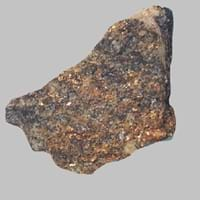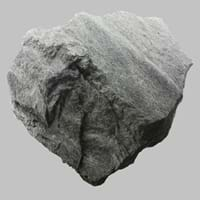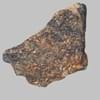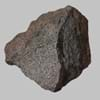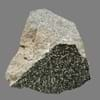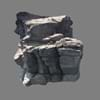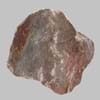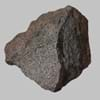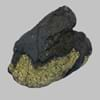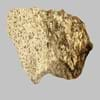Definition
Adakite is an intermediate to felsic volcanic rock that has geochemical characteristics of magma which is said to be formed by partial melting of altered basalt that is subducted below volcanic arcs
Phyllite is a fine-grained metamorphic rock with a well-developed laminar structure, and is intermediate between slate and schist rocks
Origin
Adak, Aleutian Islands
Unknown
Discoverer
Defant and Drummond
Unknown
Etymology
From Adak, Aleutian Islands
From Greek phullon leaf + -ite1
Class
Igneous Rocks
Metamorphic Rocks
Sub-Class
Durable Rock, Medium Hardness Rock
Durable Rock, Soft Rock
Group
Volcanic
Not Applicable
Other Categories
Fine Grained Rock, Medium Grained Rock, Opaque Rock
Coarse Grained Rock, Fine Grained Rock, Medium Grained Rock, Opaque Rock
Texture
Porphyritic
Phyllitic Sheen, Slaty
Color
Black, Brown, Light to Dark Grey
Black to Grey, Light Greenish Grey
Durability
Durable
Durable
Appearance
Dull and Soft
Crinkled or Wavy
Interior Uses
Decorative Aggregates, Floor Tiles, Homes, Hotels, Kitchens
Decorative Aggregates, Floor Tiles, Homes, Interior Decoration
Exterior Uses
As Building Stone, As Facing Stone, Office Buildings
As Building Stone, As Facing Stone, Garden Decoration
Other Architectural Uses
Whetstones
Curbing
Construction Industry
As Dimension Stone, Cobblestones, Rail Track Ballast, Roadstone
As Dimension Stone, Building houses or walls, Cement Manufacture, Construction Aggregate, for Road Aggregate, Raw material for the manufacture of mortar, Roadstone
Medical Industry
Not Yet Used
Not Yet Used
Antiquity Uses
Monuments, Sculpture, Small Figurines
Artifacts, Sculpture
Commercial Uses
Commemorative Tablets, Pottery, Used in aquariums
Cemetery Markers, Commemorative Tablets, Creating Artwork, Writing Slates
Types
Not Available
Not Available
Features
Has High structural resistance against erosion and climate, Host rock for Diamond, Very fine grained rock
Easily splits into thin plates, Is one of the oldest rock, Surfaces are often shiny
Archaeological Significance
Monuments
Used
Not Yet Used
Famous Monuments
Data Not Available
Not Applicable
Famous Sculptures
Data Not Available
Data Not Available
Formation
Adakite rocks are formed when the hydrous fluids are released from minerals that break down in metamorphosed basalt, and rise into the mantle they initiate partial melting.
Phyllite is a metamorphic rock which is formed by regional metamorphism of argillaceous sediments since their cleavage arose due to deviatoric stress.
Mineral Content
Olivine, Plagioclase, Pyroxene
Albite, Alusite, Amphibole, Apatite, Biotite, Chlorite, Epidote, Feldspar, Garnet, Graphite, Hornblade, Kyanite, Micas, Muscovite or Illite, Porphyroblasts, Quartz, Sillimanite, Staurolite, Talc, Zircon
Compound Content
Aluminium Oxide, MgO, Silicon Dioxide
CaO, Carbon Dioxide, MgO
Types of Metamorphism
Cataclastic Metamorphism, Contact Metamorphism, Impact Metamorphism, Regional Metamorphism
Not Applicable
Types of Weathering
Chemical Weathering, Mechanical Weathering
Biological Weathering, Chemical Weathering, Mechanical Weathering
Types of Erosion
Coastal Erosion, Sea Erosion, Water Erosion
Chemical Erosion, Coastal Erosion, Glacier Erosion, Water Erosion, Wind Erosion
Grain Size
Fine to Medium Grained
Medium to Fine Coarse Grained
Fracture
Conchoidal
Conchoidal
Streak
Bluish Black
White
Porosity
Less Porous
Highly Porous
Luster
Grainy, Pearly and Vitreous
Phyllitic
Cleavage
Not Available
Crenulation and Pervasive
Toughness
Not Available
1.2
Specific Gravity
Not Available
2.72-2.73
Transparency
Opaque
Opaque
Density
Not Available
2.18-3.3 g/cm3
Resistance
Heat Resistant, Pressure Resistant, Wear Resistant
Heat Resistant, Pressure Resistant, Water Resistant
Deposits in Eastern Continents
Asia
India, Russia
Afghanistan, Bangladesh, Bhutan, China, India, Japan, Kazakhstan, Malaysia, Pakistan, Russia, Thailand, Turkey, Vietnam
Africa
Ethiopia, Somalia, South Africa
Egypt, Ethiopia, Morocco, Nigeria, South Africa
Europe
Iceland
Austria, England, France, Georgia, Germany, Italy, Liechtenstein, Monaco, Norway, Slovenia, Spain, Sweden, Switzerland
Others
Not Yet Found
Not Yet Found
Deposits in Western Continents
North America
Canada, USA
Canada, Costa Rica, Cuba, Mexico, Panama, USA
South America
Brazil
Brazil, Colombia, Guyana
Deposits in Oceania Continent
Australia
Not Yet Found
New South Wales, New Zealand, Queensland
